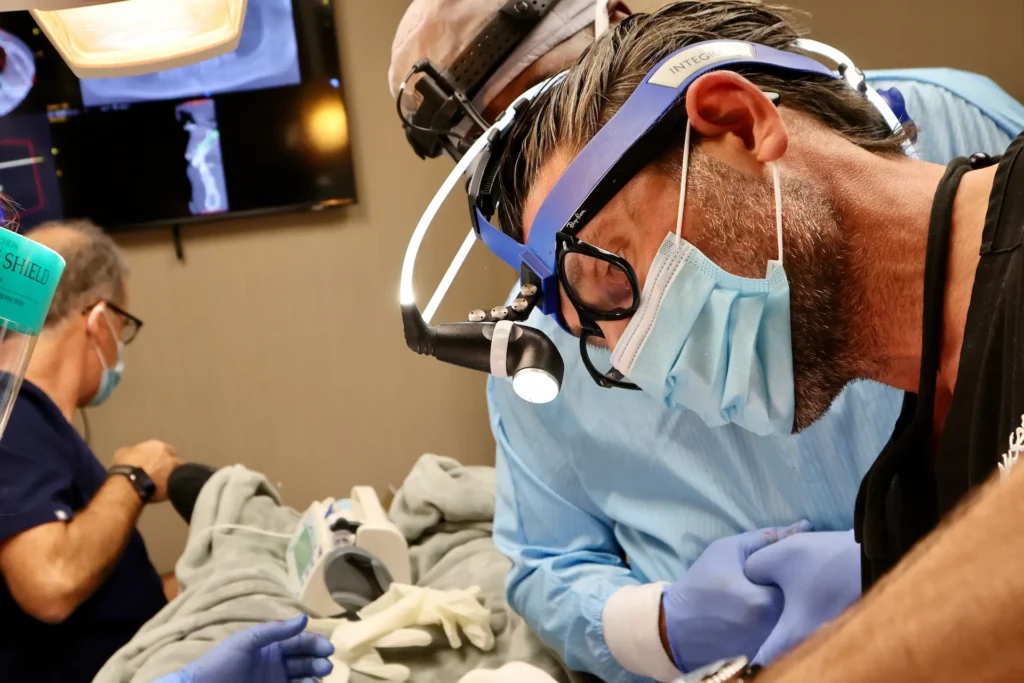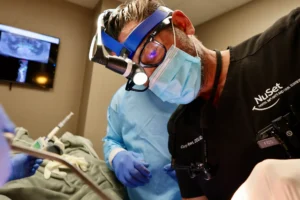A dental implant is a reliable way to replace a missing tooth. To ensure the implant stays secure, it must be stable in your jawbone. Stability is essential for the implant to work well and last a long time.
One way to check implant stability is through a torque test. This test helps your dentist measure how firmly the implant is fixed in place. It shows if the implant is ready to handle normal chewing and biting forces.
Understanding how a torque test works can help you feel more confident about your treatment. It also ensures your implant has the best chance of success.
Key Takeaways
- A dental implant torque test checks how stable your dental implant is.
- It measures the force needed to move or loosen the implant.
- Ideal stability means the implant can handle normal chewing forces.
- The test helps prevent issues like implant failure or loosening.
- Results guide your dentist in deciding the next steps.
- Factors like bone density, implant design, and healing affect test outcomes.
- Alternatives like RFA and imaging also check implant stability.
- Success relies on skilled placement, good care, and regular check-ups.
What is a Torque Test in Dental Implants?
A torque test checks how stable your dental implant is after placement. It measures the amount of force needed to move or loosen the implant. This force is called “torque” and is measured in Newton centimeters (Ncm).
The test helps your dental implant specialist confirm if the implant has fused well with your jawbone. This process, called osseointegration, is critical for your implant’s long-term success. Without proper integration, the implant may not stay secure or function correctly.
It’s a straightforward and effective way to check if your implant is ready for the next steps, like attaching a crown or bridge.
Why is a Torque Test Important?
A torque test is important because it ensures your dental implant is stable and secure. Stability is the foundation of a successful implant. Without it, your implant might fail or cause discomfort.
This test helps your dentist confirm that the implant has properly fused with your jawbone. If the implant is secure, it can handle the pressure from chewing and biting without shifting.
It also helps identify problems early. If the test shows the implant isn’t stable enough, your dentist can adjust your treatment plan. This might include giving the implant more time to heal or taking other steps to improve stability.
The torque test reduces the risk of future issues, like implant loosening or failure. It’s a simple yet essential step to ensure your implant will last and work as it should.
How is a Torque Test Performed?

A torque test is quick and straightforward. Your dental implant specialist uses a special tool called a torque wrench to perform it. This tool gently applies controlled pressure to your implant to measure how stable it is.
The test starts with the dentist attaching the torque wrench to your implant. They slowly turn the wrench to apply rotational force. The amount of force needed to move the implant is measured in Newton centimeters (Ncm).
An ideal reading is usually between 30 and 32 Ncm. This shows the implant is stable enough to handle normal use. If the torque value is too low, it means the implant may need more time to fuse with the bone. If it’s too high, it could put stress on the surrounding bone.
Factors That Affect Torque Test Results
Several factors can influence the results of a torque test. These factors help determine how secure your implant is and whether it’s ready for the next steps.
Bone Density and Quality
The strength and density of your jawbone play a big role in implant stability. If your bone is dense, the implant will likely be more secure. If the bone is softer or thinner, the implant may take longer to integrate.
Implant Design
The shape, size, and surface of your implant matter too. Some implants are designed to grip the bone better, which can improve stability.
Surgical Technique
Precision during the placement of the implant is critical. A skilled dentist ensures the implant is positioned at the right angle and depth. Poor placement can affect how well the implant integrates with the bone.
Implant Location
Different areas of your mouth have different bone densities. For example, the front of the lower jaw usually has denser bone than the back of the upper jaw. This can impact how secure the implant feels during the test.
Healing Process
How your body heals also matters. Proper care after surgery, like maintaining good oral hygiene and following your dentist’s instructions, helps the implant integrate well with the bone.
Each of these factors works together to determine the success of your implant. By understanding them, you can see why the torque test is a key step in making sure your implant stays secure.
How We Interpret Torque Test Results at NuSet Dental Implants and Oral Surgery
The results of a torque test tell us how stable your implant is. These numbers help guide the next steps in your treatment. Here’s what the results mean:
Ideal Torque Values
As stated earlier in the article, a reading between 30 and 32 Newton centimeters (Ncm) is usually ideal. This means your implant is stable and secure. It’s ready to handle everyday pressure from chewing and biting.
Low Torque Values (Under-Torque)
If the torque value is too low, the implant may not be fully stable yet. This can happen if the bone hasn’t completely fused with the implant. When this happens, we may recommend waiting longer for healing or additional treatments to strengthen the area.
High Torque Values (Over-Torque)
If the torque reading is too high, it can put stress on the surrounding bone. This may cause discomfort or even damage the implant site. We will ensure the force applied stays within a safe range to avoid these risks.
If the torque test shows ideal stability, we can then move forward with the next step, like placing a crown or bridge. If the implant isn’t stable enough, we’ll adjust your treatment plan to give it the best chance of success.
Alternatives to Torque Testing
While a torque test is common for checking implant stability, it’s not the only option. Dentists sometimes use other methods to ensure your implant is secure. Here are a few alternatives and how they work:
Resonance Frequency Analysis (RFA)
RFA measures the stability of your implant by using sound vibrations. A small device sends vibrations to the implant and records its response. The result is an Implant Stability Quotient (ISQ) score, which tells your dentist how stable the implant is.
RFA is non-invasive and doesn’t put pressure on the implant. It can be repeated without causing any harm.
A higher ISQ score means better stability, while a lower score might mean the implant needs more time to integrate.
Percussion Testing
This involves gently tapping the implant or the surrounding teeth to check for movement or unusual sounds. It’s quick and doesn’t require any tools. However, it provides less detailed information compared to torque testing or RFA.
Imaging Techniques
Dental implant specialists may also use X-rays or 3D imaging to assess how well the implant has fused with the bone. These images show the bone’s density and how closely it surrounds the implant.
Imaging gives a clear picture of the implant’s position and bone integration but it doesn’t measure functional stability like torque testing or RFA.
No matter which method is used, the goal is the same: to ensure your implant is secure and ready for the next step. At NuSet Dental Implants and Oral Surgery, we choose the best option based on your specific needs and the stage of your treatment.
Trust NuSet Dental Implants and Oral Surgery for Secure and Successful Dental Implants!
We ensure every dental implant we place is stable, secure, and built to last. Using advanced tools like torque tests, we confirm your implant’s success at every step. Our experienced team knows how to deliver the best care tailored to your needs.
A dental implant is an investment in your smile and confidence. With proper testing, expert placement, and personalized follow-up care, we help you achieve lasting results.
Schedule a consultation with us now to get started!
Frequently Asked Questions
Is an implant torque test painful?
No, an implant torque test is not painful. The procedure involves applying gentle, controlled pressure to the implant. Most patients feel no discomfort during the test.
What is the purpose of a torque tester?
A torque tester measures the stability of your dental implant. It checks how securely the implant is fixed in the bone by applying a specific amount of rotational force. This helps your specialist confirm whether the implant is ready for the next stage of treatment.
How many times can you torque an implant screw?
Implant screws can be torqued multiple times if needed, but excessive torquing should be avoided. Dental implant specialists follow guidelines to ensure the screw’s integrity and the implant’s stability. Each adjustment is done carefully to avoid damage.
What happens if you over torque an implant?
Over-torquing an implant can stress or damage the surrounding bone or implant itself. It may lead to cracks, loosening, or failure of the implant. That’s why NuSet uses precise tools to apply the right amount of force and avoid overloading the implant.





